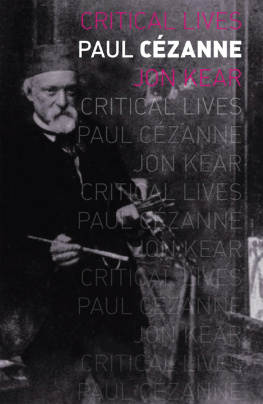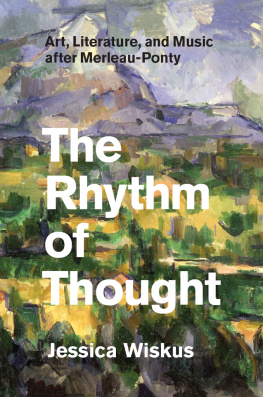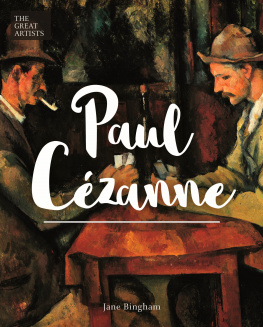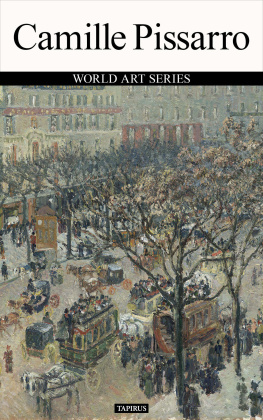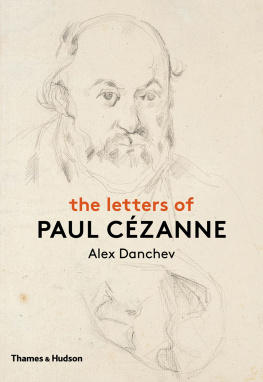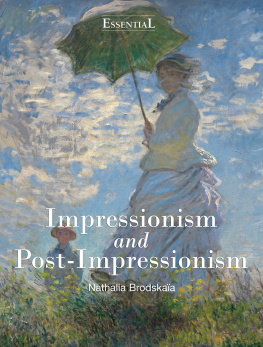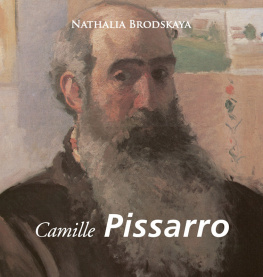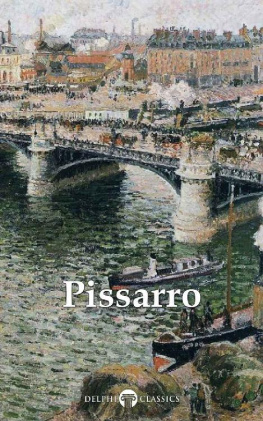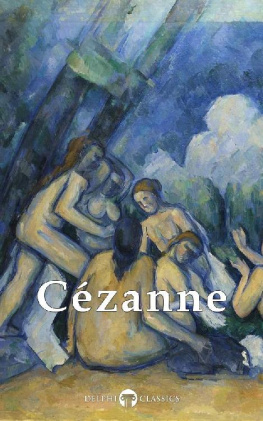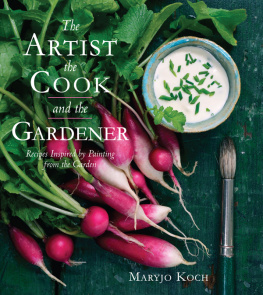Paul Czanne

Titles in the series Critical Lives present the work of leading cultural figures of the modern period. Each book explores the life of the artist, writer, philosopher or architect in question and relates it to their major works.
In the same series
Antonin Artaud David A. Shafer
Roland Barthes Andy Stafford
Georges Bataille Stuart Kendall
Charles Baudelaire Rosemary Lloyd
Simone de Beauvoir Ursula Tidd
Samuel Beckett Andrew Gibson
Walter Benjamin Esther Leslie
John Berger Andy Merrifield
Jorge Luis Borges Jason Wilson
Constantin Brancusi Sanda Miller
Bertolt Brecht Philip Glahn
Charles Bukowski David Stephen Calonne
William S. Burroughs Phil Baker
John Cage Rob Haskins
Albert Camus Edward J. Hughes
Fidel Castro Nick Caistor
Paul Czanne Jon Kear
Coco Chanel Linda Simon
Noam Chomsky Wolfgang B. Sperlich
Jean Cocteau James S. Williams
Salvador Dal Mary Ann Caws
Guy Debord Andy Merrifield
Claude Debussy David J. Code
Fyodor Dostoevsky Robert Bird
Marcel Duchamp Caroline Cros
Sergei Eisenstein Mike OMahony
Michel Foucault David Macey
Mahatma Gandhi Douglas Allen
Jean Genet Stephen Barber
Allen Ginsberg Steve Finbow
Ernest Hemingway Verna Kale
Derek Jarman Michael Charlesworth
Alfred Jarry Jill Fell
James Joyce Andrew Gibson
Carl Jung Paul Bishop
Franz Kafka Sander L. Gilman
Frida Kahlo Gannit Ankori
Yves Klein Nuit Banai
Akira Kurosawa Peter Wild
Lenin Lars T. Lih
Stphane Mallarm Roger Pearson
Gabriel Garca Mrquez Stephen M. Hart
Karl Marx Paul Thomas
Henry Miller David Stephen Calonne
Yukio Mishima Damian Flanagan
Eadweard Muybridge Marta Braun
Vladimir Nabokov Barbara Wyllie
Pablo Neruda Dominic Moran
Georgia OKeeffe Nancy J. Scott
Octavio Paz Nick Caistor
Pablo Picasso Mary Ann Caws
Edgar Allan Poe Kevin J. Hayes
Ezra Pound Alec Marsh
Marcel Proust Adam Watt
John Ruskin Andrew Ballantyne
Jean-Paul Sartre Andrew Leak
Erik Satie Mary E. Davis
Arthur Schopenhauer Peter B. Lewis
Adam Smith Jonathan Conlin
Susan Sontag Jerome Boyd Maunsell
Gertrude Stein Lucy Daniel
Igor Stravinsky Jonathan Cross
Leon Trotsky Paul Le Blanc
Richard Wagner Raymond Furness
Simone Weil Palle Yourgrau
Ludwig Wittgenstein Edward Kanterian
Frank Lloyd Wright Robert McCarter
Paul Czanne
Jon Kear
REAKTION BOOKS
Published by
Reaktion Books Ltd
Unit 32, Waterside
4448, Wharf Road
London N1 7UX, UK
www.reaktionbooks.co.uk
First published 2016
Copyright Jon Kear 2016
All rights reserved
No part of this publication may be reproduced, stored in a retrieval system or transmitted, in any form or by any means, electronic, mechanical, photocopying, recording or otherwise, without the prior permission of the publishers
Page references in the Photo Acknowledgements and
match the printed edition of this book.
Printed and bound in Great Britain by Bell & Bain, Glasgow
A catalogue record for this book is available from the British Library
eISBN: 9781780236032
Contents

Paul Czanne, in 1904, sitting in front of his Les Grandes Baigneuses, photograph by mile Bernard.
Introduction: The Myth of Czanne
In 1904 mile Bernard, a leading Symbolist painter and critic, made the long trip from Paris to Czannes studio in Aix-en-Provence to interview him for an article he was to publish later that year. During his stay he took several photographs of Czanne. In the most emblematic of these, Czanne poses in the dim light of his austere studio at Les Lauves, his clasped hands resting on his paint-spattered trousers, before a large work propped on an easel: an elderly artist framed by the fantasia of youthful female nudes on the canvas behind him. The painting was one of three ambitious and idiosyncratic large paintings collectively known as Les Grandes Baigneuses (The Bathers) that preoccupied his later years. These show female bathers set on the edge of a stream, basking in the sun or about to enter the water. Czanne worked intermittently on more than one canvas at once, making extensive changes as he went along. The one in the photograph is the version from the Barnes Foundation in Philadelphia before it underwent several crucial changes. Czanne had already been labouring a decade on it by then, and it would remain, as its companion paintings would, incomplete at his death. Viewed together as an ensemble, it is clear how interconnected these paintings are and how they were conceived as alternate responses to the possibilities and problems posed by the subject. Preliminary oil sketches indicate that he planned to extend the series.
The large scale of these paintings and the fact that he worked on them for such a protracted period indicate the special value Czanne accorded them. He often remarked to visitors to his studio that these paintings were to be the testing ground for his theories, and it was as such that they were understood by the audience for his painting. They were to become indelibly associated with his legacy. The Barnes version, the first of the series, was clearly intended to be a chef-doeuvre, and was conceived on the eve of his re-entry into public exhibition after a long exile from exhibiting in Paris, though it was not shown in his lifetime.
In 1907 a major retrospective of 56 pictures at the Salon dAutomne in two rooms of the Grand Palais included two of the late Grandes Baigneuses, almost certainly the London and Philadelphia versions, which became the focus of discussion of the artist. By then Czanne was dead, having succumbed to pneumonia the previous autumn, aged 67. Already suffering from the degenerative effects of diabetes over the previous sixteen years, he had collapsed in a rainstorm after a day painting in the fields of Aix and lay unconscious and exposed to the elements for several hours. Despite appearing to recover, within days he had passed away.
In the course of the twentieth century Czanne has subsequently been regarded as the father of modern painting and integral to the canon of modernism. While his landscapes, portraits and still-lifes, as his letters attest, revealed a commitment to an empirical approach to painting sur le motif (in nature), his bathers seemed the antithesis of all this: strange reveries rendered without models that freely reworked the old masters he had studied in the Louvre, yet in a way that seemed quite contemporary in mood and sensibility. Les Grandes Baigneuses appeared at once to reach back to the past, not merely to the old masters but to something more primordial and archaic, and at the same time to be ultra-modern. These works posed many questions about the artist and the conceptual framework of his late painting.

